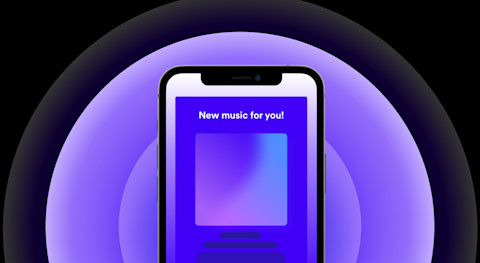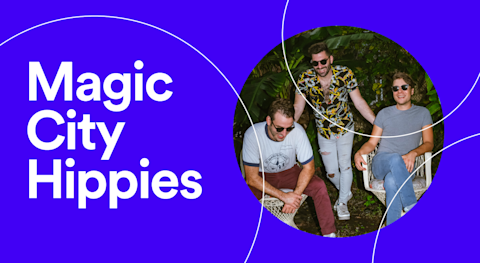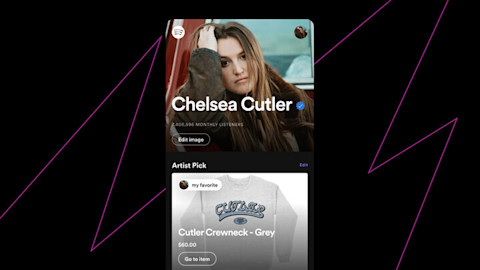
Marquee Strategies: 6 Ways to Amplify Your New Release
Explore ways you can use our campaign tool to amplify your new music, whether you’re looking to maximize engagement overall or develop specific audience segments.
Working with eight labels and distributors, months-long research reveals the effectiveness of our campaign tool vs. other digital advertising.
Marketing new music is all about targeting the right listeners, reaching them at the right moment, and measuring the impact. But today artists and their teams are often promoting releases on social media — platforms that weren't made for streaming music. Among the top questions we get from them is whether these social media ads actually drive engagement on Spotify, especially given the guesswork of trying to target real music fans and capture their attention in a busy social feed.
With Marquee, artists and their teams got a powerful new way to understand what their marketing spend drove on Spotify. But since they can't attribute streaming results to ad spend on social platforms, they've wanted to know how to compare returns from social ads to Marquee.

In short: The study showed that Marquee delivers an average of 10x more Spotify listeners for every dollar spent on similar social ads. Now let's get into the details.
We partnered with eight labels and distributors to select a wide range of artists with upcoming releases. Ten new releases were featured in the study, and they included a mix of release types (albums, EPs, and singles), a mix of artists' audience sizes (from 300,000 to 16 million monthly listeners), and a mix of genres (e.g. rap, electronic, indie, and rock).
After working with partners to identify the right releases, they created ads to run on the most popular social media marketing platforms. To help ensure that their ads were set up in a similar way to Marquee, we applied the following study requirements:
We also wanted to make sure the comparison was as apples-to-apples as possible by attributing results in similar ways across all platforms. For Marquee, we measured the number of people who listened to the promoted release within 14 days of clicking on the Marquee. For all other advertising tools, we measured the number of people who listened to the promoted release on the Spotify mobile app within 14 days of clicking on the social ad.
While Marquee gets listeners into your new release when they're already on Spotify, social ads involve many more steps and high potential for dropoff before listeners get to Spotify.
On average, Marquee delivered 10x more Spotify listeners for every dollar spent on similar social ads. While this was the average, even the release with the lowest rate in the study showed that Marquee reported 5x more Spotify listeners per dollar spent on social ads. Not only did Marquee deliver more listeners on average per dollar, it also resulted in more listeners per click: Marquee delivered a 100% higher click-to-listen-rate, on average, than similar social ads.
"We believed in the efficacy of on-platform Marquee campaigns vs paid social, but the results of this study were even more definitive than we expected." -Whitaker Elledge, VP of Artist Development at Dualtone Music Group
For Dualtone Music Group's Elledge, the study showed the value of marketing music directly on Spotify: "It's clear that Marquee not only drives streams at a higher conversion rate and a lower cost [per listener] — it helps us foster meaningful, long term connections between fans and our artists. That's our core mission."
Social ads target listeners based on proxy metrics, making it easy to reach broad audiences, but difficult to be sure you are reaching listeners — especially those listeners who have the potential to become fans. They also reach listeners out of context (while they're scrolling and reading, next to other ads), not when they're ready to listen. And because they're separate platforms, they can't directly attribute marketing spend to listening behavior.
Marquee is made for marketing music, meaning it:

The Marquee results were a win-win for YMU US Music Head of Marketing SuzAnn Brantner. "We have always questioned whether our social ads were truly driving engagement on Spotify," Brantner says. "With these results from Steve Aoki's single, 'Just Us Two,' we were able to see the value in marketing directly on a music platform over social ads — our Marquee campaign was over 20x times more cost-efficient than our social ads promoting the single."
Ready to drive more listeners and spend your marketing budgets more effectively? Get started with Marquee today, and watch for new updates on our site. We're always updating and expanding Marquee, which is now available to all eligible artists in the markets listed here. If your team is based in a market where Marquee is available to purchase but you don't see the Campaigns tab, ensure your billing country matches your market.
Explore ways you can use our campaign tool to amplify your new music, whether you’re looking to maximize engagement overall or develop specific audience segments.
The Miami band’s use of Spotify for Artists marketing tools made listeners four times more likely to stream pre-release singles and helped triple the band’s audience in Radio and Autoplay before the album dropped.
It’s easier than ever to add your merch to Spotify to promote your music, connect with fans, and grow your business.


